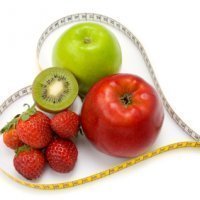Magnesium and Foods Rich in Magnesium
Magnesium belongs to the essential natural elements, which our body needs daily for a variety of reasons. This natural element helps maintaining the normal functioning of nerve and immune systems and prevents inflammation. It is needed for our bones to be firm and our heart to be resilient. More than three hundred biochemical processes depend on this mineral. If you experience muscle spasms or osteoporosis, it may be due to the deficiency of it. Moreover, lack of magnesium helps forward the development of maladies like cerebral infarction and cardiovascular disease. Magnesium also takes part in synthesis of proteins and metabolism of energy. Put simply, if you don’t receive enough of it, you may start to feel depressed and tired on the daily basis.
The daily norm of magnesium intake is four hundred milligrams for men and three hundred –for women. If your intake is too big, the body will try to get rid of the excessive magnesium through diarrhea. But this happens very rarely – roughly eighty percent of people around the globe suffer from magnesium deficiency.
To make yourself safe, you need to regularly consume foods rich in magnesium.
1. The Greens
| Spinach | |
| 100 g | 1 cup |
| Magnesium: 79 mg (23% DV) |
Magnesium: 24 mg (7% DV) |
| Chard, Swiss | |
| Magnesium: 81 mg (23% DV) |
Magnesium: 29 mg (8% DV) |
| Kale, Scotch | |
| Magnesium: 88 mg (25% DV) |
Magnesium: 59 mg (17% DV) |
| Dill Weed, Fresh | |
| Magnesium: 55 mg (16% DV) |
Magnesium: 5 mg (1% DV) |
The greens are topping the list. Raw spinach, Swiss chard, kale, dill weed and many others. The leafy vegetables have chlorophyll, the so-called “blood” of a plant, which serves to convert the sunlight into energy. The chlorophyll looks much like a human blood cell, but instead of iron it has magnesium in the centre it. Technically, eating greens every day is the most convenient way to make sure you get enough magnesium. The concentration of the mineral is so high, that even dried greens as spices in seasoning or sauces can be helpful. But the best thing is to add fresh greens in salads. The more, the better!
2. Flaxseed
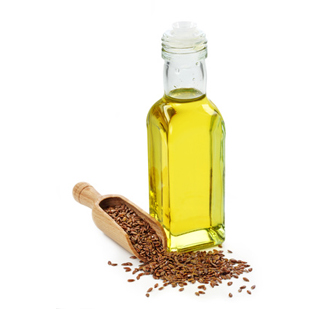
| Oil, Flaxseed, Contains Added Sliced Flaxseed | |
| 100 g | 1 cup (219 g) |
| Magnesium: 15 mg (4% DV) |
Magnesium: 33 mg (9% DV) |
Flaxseed is the second best way to fight magnesium deficit. Although it’s hard to eat the amount to cover your daily norm (100g), even small servings of ground flaxseed or oil will be sufficient to maintain the balance. Flaxseed is a very popular diet product nowadays. It is valued for the special nutty flavor, even though not everybody likes it. The most popular way to eat ground flaxseed is to add it directly to cereal, soups and even desserts! In tiny amounts, it does not affect the taste too much but rather adds an interesting note to the flavor. To increase the magnesium intake to the max, you may try the flax crackers. Mix three cups of whole flour, one tablespoon of salt, half cup of ground flax and half cup of whole flax, a cup of lukewarm water and spices. Let the dough rest for a little while, then form crackers and bake under the moderate temperature until they get lightly brown and crispy.
3. Dark Chocolate
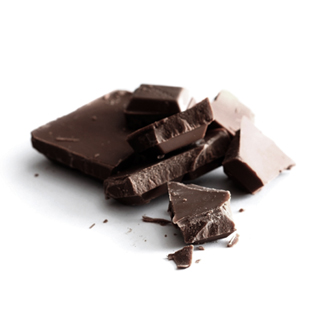 Types of Dark Chocolate Rich in Magnesium (100g):
Types of Dark Chocolate Rich in Magnesium (100g):
| Chocolate, Dark, 70-85% Cacao Solids | |
| 100 g | 1 oz (28 g) |
| Magnesium: 228 mg (65% DV) |
Magnesium: 65 mg (18% DV) |
Good news for the candy hounds – dark chocolate is also a good magnesium source! It is a real powerhouse, although it contains sugar, which hampers the absorption of this mineral. Because of the sugar and high calorific value of chocolate, it wouldn’t be wise to eat a whole bar at a time (the amount which will suffice to cover a daily need of magnesium). But you still may enjoy a couple of pieces during your lunch break. But don’t drink too much tea or coffee with it! Unfortunately, these drinks "wash out" magnesium. And remember to avoid milk chocolate! It is very poor in magnesium and the excessive sugar it contains will affect your health in many unpleasant ways.
4. Raw Sunflower Seed
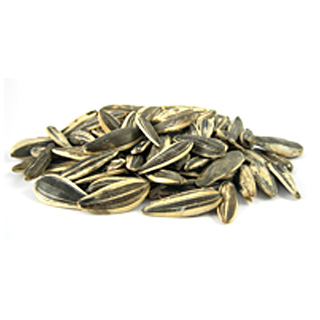
| Seeds, Sunflower Seed Kernels, Dried | |
| 100 g | 1 cup, with hulls, edible yield (46 g) |
| Magnesium: 325 mg (93% DV) |
Magnesium: 150 mg (43% DV) |
Raw sunflower seeds are a perfect snack choice, as they are extremely rich in magnesium and a lot of other vitamins and minerals. They’re very dense in calories, but, due to the proteins and plant fiber they contain, they keep you full up for a relatively long time. Sunflower seeds also contain much fat, but, if you eat moderately, there’s nothing to worry about. This fat is healthy and contributes to your health more, that the animal fat.
5. Pumpkin Seeds
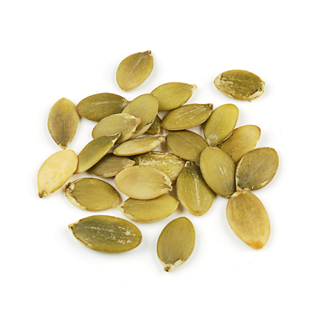
| Seeds, Pumpkin And Squash Seed Kernels, Dried | |
| 100 g | 1 cup (129 g) |
| Magnesium: 592 mg (169% DV) |
Magnesium: 764 mg (218% DV) |
While on the subject of seeds, let’s also mention the pumpkin seeds. Apart from being the number one source of magnesium, they also help to maintain the glucose level on a normal level, which makes them an essential product for those who suffer from diabetes. They also contain source of tryptophan, zinc and omega-3s. The bad thing is that in most stores we can find only roasted pumpkin seeds, while the healthiest are the raw ones.
6. Almonds And Cashews
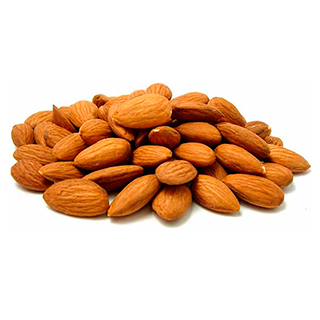
| 100 g | 1 oz (28 g) |
| Nuts, Almonds, Blanched | |
| Magnesium: 268 mg (77% DV) |
Magnesium: 76 mg (22% DV) |
| Nuts, Cashew Nuts | |
| Magnesium: 292 mg (83% DV) |
Magnesium: 83 mg (24% DV) |
Almonds and cashews are also very high in magnesium. Again, the perfect choice for snacking throughout the day! Another interesting way to make use of nuts is to drink nut milk; the most popular one is almond milk. You may fully or partly substitute regular milk with nut milk and this will radically improve your health by bringing much magnesium and zero cholesterol in.
7. Quinoa

| Quinoa, Uncooked | |
| 100 g | 1 cup (170 g) |
| Magnesium: 197 mg (56% DV) |
Magnesium: 335 mg (96% DV) |
Quinoa is a healthy replacement of couscous and white rice. Unlike the latter, it is absolutely safe for your health and your shape. It’s gluten-free, extremely nutritious and tasty! Eating a 200g serving of quinoa will fully cover your daily need of magnesium. It also contains a lot of plant fiber, meaning you won’t feel empty for at least 3-4 hours after having quinoa in a meal.
9. Banana

| Bananas | |
| 100 g | 1 medium (7 inch to 7-7/8 inch long) (118 g) |
| Magnesium: 27 mg (8% DV) |
Magnesium: 32 mg (9% DV) |
Banana is a runner-up – 27mg of magnesium per 100 grams of the fruit. On one hand, it can’t be considered a major source of digestible magnesium. But on the other hand, it is cheap, easy to get and to use as a snack. It is a very popular and tasty product, but remember not to overeat it, because it contains many calories and much sugar.
The magnesium you receive with food is mainly stored in your bones. That’s why its deficiency doesn’t show up on any test of the blood. But even if you don’t know the exact state of your magnesium resources, be sure to eat the products from the abovementioned list. Unfortunately, in our time it’s very hard to find natural plant food grown on the right soil. It’s also hard to eat only pure food. If you live in a city, eat refined products and lead a stressful life (as most of us do), you are almost guaranteed to suffer from magnesium deficit. Soda drinks, refined sugar, tea or coffee destruct or simply wash magnesium out of the body. Mental and physical overload contributes to the lack of this element as well.
All in all, if you want to keep safe from the magnesium deficit, you need to follow the common basic rules of healthy lifestyle:
- Eat a lot of pure, preferably unprocessed, plant food;
- Avoid refined products, such as sugar, white rice, white flour;
- Drink tea and coffee moderately or don’t drink them at all;
- Avoid stress and go in for sports.
These simple steps will save you from the deficit of magnesium and get you to the better shape both mental and physical!
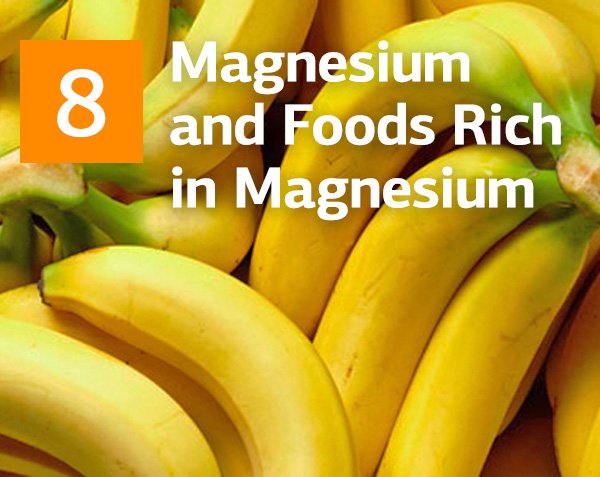
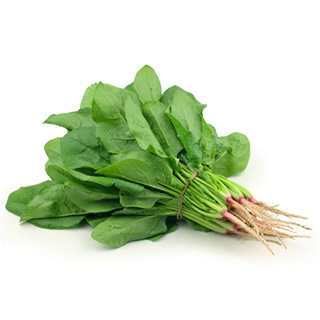 Types of Greens Rich in Magnesium (100g):
Types of Greens Rich in Magnesium (100g):



